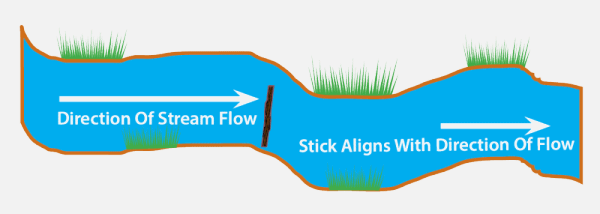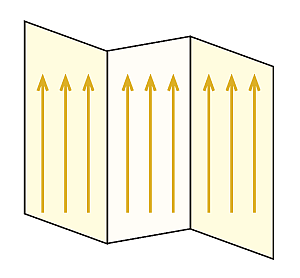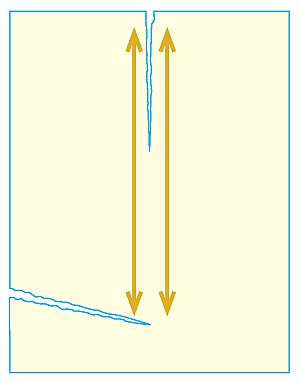Paper Grain: The grain direction of paper is most significant in sheets that will be fed into a laser printer or folded. Laser printing usually works best with long grain paper. When folding it is best to fold parallel to the grain of the paper.
The grain of the paper is set during the manufacturing process. Typically, a paper is said to be either long or short grain. As the slurry of cellulose fiber and water is fed to the screen that allows the paper to be formed, most of its fibers line up in the direction that the screen is running in. As a boy I used to like to float sticks down the creek near my home. As a rule the sticks would line up in the stream lengthwise with the current and parallel with the bank. Paper fibers react much the same way in the manufacturing process.

Long Grain:
The fibers in the paper run parallel to the long side of the sheet of paper.

Short Grain:
The fibers in the paper run parallel to the short side of the paper.

Folding Considerations:
Folding paper parallel to the grain produces less cracking of the paper. When paper is folded against the grain it tends to crack and cause a rough edge along the fold. The heavier the weight of the paper being used the more likely it is to crack. Paper folded against the grain should be scored before folding, especially if there is a large amount of ink coverage on the printed piece.

Testing To Verify Paper Grain
You receive a phone call from a customer concerning the laser letterhead they just bought from you. The paper is jamming in their laser printers. How do you tell that the grain of the paper is not the problem? Below are three simple test to help you verify the direction of grain of paper.
The Fold Test
Paper folds with the least resistance when folded parallel to the direction of the grain of the paper. Take an 8 1/2" x 11" sheet of paper and and fold the 11" sides in toward each other. If the paper is long grain, there should be little resistance. Take the same sheet of paper and fold the 8 1/2" sides of the sheet in toward each other. You should notice greater resistance to folding in this direction if the paper is long grain.

The Tear Test
Paper usually tears straighter in the direction of the papers grain. Take a sheet of paper and tear it length wise for 4 or 5 inches. If the paper is long grain the vertical tear should be relatively straight. Take the same sheet of paper and tear it across the short side. If the tear is not straight in this direction then it is being torn against the grain of the paper.

The Thumbnail Test
The thumbnail test is easy to do and yields dramatic results that show the grain direction of the paper. Simply place the edge of the paper between your thumb and forefinger, apply pressure with your thumbnail and drag the thumbnail along the edge of the paper. The long grain side of the paper should either be unchanged or have wide wavelike curves where the pressure was applied. The short grain side will have waves that are closer together. See the animation below to see an illustration of the short grain side of a sheet of paper.

